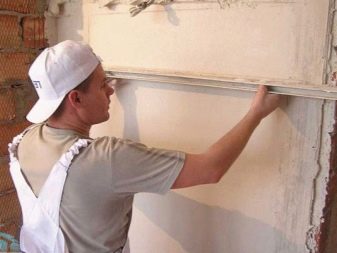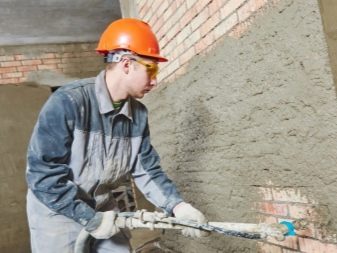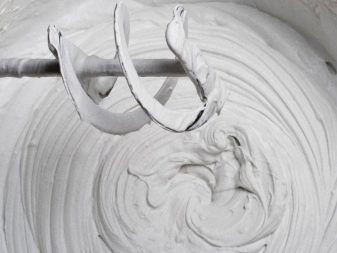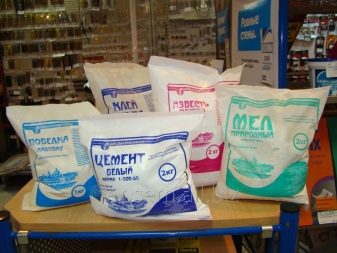Lime plaster: pros and cons
Traditionally, for the construction and decoration of surfaces, apply lime plaster, which throughout its existence does not lose demand. It is used to finish the interior, as well as to level and protect any surfaces. Lime mortars are warm, but do not have high strength, like cement.
Special features
Experienced people know that building mixtures are used to smooth the internal surfaces and exterior decoration of buildings. Thus, they protect the surface from the negative impact of natural factors, and the use of the solution turns the finish into a comfortable and short procedure.
Lime plaster is prepared either before finishing work,or facilitate the process, and get ready-made mixtures. They simply diluted with water in a certain ratio.
If you wish to prepare the solution yourself, you need to know its composition, which includes the following components:
- lime;
- water;
- river sand.
Advantages and disadvantages
The advantages of lime plaster are due to a number of factors.
- High adhesion ability, and this property does not depend on the raw materials from which the treated surface is made. Particularly successful finish is obtained on surfaces of stone and wood. It can be concluded that lime is a versatile material for construction.
- After the mixture hardens, high plasticity appears, due to which there is no risk of cracking.
- The ability of the solution to "breathe" and high vapor permeability guarantee a favorable indoor climate.
Along with indisputable advantages, lime has some drawbacks:
- After carrying out repair work after several days, it can be noted that the surface has acquired bumps. This minus is easy to eliminate if you stick to the advice: since the solution is applied in several layers,it is necessary to wait some time after the first layer, and only then proceed to the second. Usually time depends on the type of solution. For some options, just wait an hour, and for some - a day.
- The disadvantage is the lack of sufficient hardness of the applied composition. It is important to know that after a while, the plaster will acquire sufficient hardness, and it will be possible to drive in nails.
- Before starting work there is a need for a primer or a simple splash. It is prepared as follows: cement with lime is mixed to form a creamy consistency. But after sprinkling it is necessary to wait up to 10 hours for the mixture to harden.
- The protective action against the appearance of mold and mildew is achieved due to the bactericidal properties of the material. Even with high humidity in the room there is no risk of microorganisms.
- Affordable plastering price.
- High plasticity of the solution, as well as ease of application during the work. This makes it possible to do repair work with their hands in the absence of the necessary experience.
- Using lime plaster on a wooden surface will protect the wall from various rodents, insects.
Kinds
By combining lime with other components with those positive characteristics that are not in lime, it became possible to obtain solutions with improved performance characteristics.
Such substances include cement, clay and gypsum. Clay as an additive to the lime mortar will add durability to the coating, but it dries quickly, so in no case can the mixture be prepared in advance. PVA glue, in the amount of 2% of the total volume of the solution, helps speed up the process of solidification. It increases viscosity, thanks to which the coating resists all external factors. Color additives increase the vapor permeability of the surface, and the prepared dry mix can be used for further repairs.
Gypsum allows the mixture to quickly set, while the wall is very smooth.
Based on the component added to the mixture, there are several types of building lime mortar:
- Lime with the addition of sand is used for roughing the ceilings and walls. But this type of mixture is used for interiors, as it does not have sufficient strength.On the surface of the plaster it can not be applied - there will be exfoliated parts.
- Lime with cement is a complex mortar containing more than two components. Together with the cement in the solution contains sand. This mixture is highly durable and is used for finishing all kinds of surfaces. This type of lime mortar is considered an excellent option for such rough work as facade decoration and painting. The mixture is often used to operate in conditions of high humidity.
- Lime with the addition of gypsum is used for interior decorating with a moisture level of not more than 60%. It is used for walls made of wood, plaster, stone. The limitation is concrete: it interacts with plaster and forms layers.
- Lime with the addition of clay is applied to the strength of the internal walls.
With the wrong ratio of binder and lime, the mixture is often either oily or lean. If the mixture is oily, it means that the binder component in the solution is more than necessary. As a result, the wall surface is cracked. If the mortar is thin, then this indicates a lack of lime,which leads to the destruction of plastic properties and the acquisition of low strength.
At the same time the surface is not subject to cracking and shrinkage.
Application area
Ordinary plaster is used for finishing buildings, which will later be painted or plastered with wallpaper. Decorative plaster with original texture and colored relief is used to finish the facades of public buildings. For residential buildings, this solution is used infrequently. Plasters with special protective additives protect against water and ensure heat in residential buildings.
Lime mortars with the addition of cement plaster walls in buildings where there is an increased level of humidity. Lime solutions with the addition of gypsum and cement are recommended to be used only inside dry rooms. Clay lime plaster is used to decorate walls of wood and stone in rooms with low humidity.
Preparation of the solution
Preparation of plaster lime for work includes several stages.
At the first stage, it is necessary to determine the type of solution. so that its properties are suitable for a specific surface.For self-preparation of plaster it is necessary to take into account the sequence of actions - preparation of a single dry mixture from the components, followed by dilution with warm water in the required proportions. You can mix components in any capacity. However, the bottom of the dishes should be even. This is due to the fact that the lime will settle on the bottom due to poor dissolving ability.
The result is a huge waste of used raw materials, and a poor consistency of the solution.
Next, the pre-sifted sand layer is poured around the entire perimeter, and lime is laid on top. Then the composition is mixed until a homogeneous consistency. At the last stage, it is necessary to pour in several layers of lime, and, adding warm water, thoroughly knead.
Preparation of the first layer of plaster: 0.2 parts of lime and 2.5 parts of sand are added to one part of the Portland cement. The second layer is prepared by adding 0.2 parts of lime and two parts of sand to the cement part. To prepare the third layer, take 1 part of cement, 0.2 parts of lime and 1-1.5 parts of sand.
For high-quality mixing of all components of the mixture usually use specialnozzles on the drill. This method allows you to simplify and speed up the process of making lime mortar. Do not forget that for the preparation of high-quality mixture should adhere to the exact proportions, and add water gradually, stirring until the composition is homogeneous.
The quality of the surface and the final result depend on the correct application of each layer of lime mortar. At observance of necessary proportions and technology of performance of finishing works, it is possible to make repair independently and to save money significantly.
Application Tips
Lime plaster is applied to the surface in three layers. This is the most important condition for obtaining high-quality results.
The first layer, called spray, improves adhesion of the first layer to the base of the wall. For this layer, the consistency of the solution is prepared not too thick. The mixture is thrown over the entire surface with the help of trowels, without subsequent alignment. At the trowel should get some amount of spray and make a wave with a brush at close range. If you swing strongly and sweepingly, then a large amount of the mixture is sprayed, not hitting the surface.
The second layer is the ground. It is considered the main layer and has a thickness of up to 50 mm. A solution is prepared for it thicker than when it is sprayed. The mixture is applied to the surface with trowels or smeared with scorifiers, since its consistency allows it. Excess soil cleaned plaster cutter. After this stage, it is necessary to check the horizontal and vertical uniformity of the application.
The third layer serves to eliminate defects., small chips, smoothing down and getting a flat surface. The mixture is prepared in the same consistency as for the application of the spray, and is applied to a wet surface with a thickness of a couple of millimeters. Then the surface is ground with a special device - a grater intended for grinding. If the primer has dried, then you can wet the surface with a brush.
The use of lime plaster can significantly save money and make a quality repair.
You will learn more about applying plaster from the following video.















































